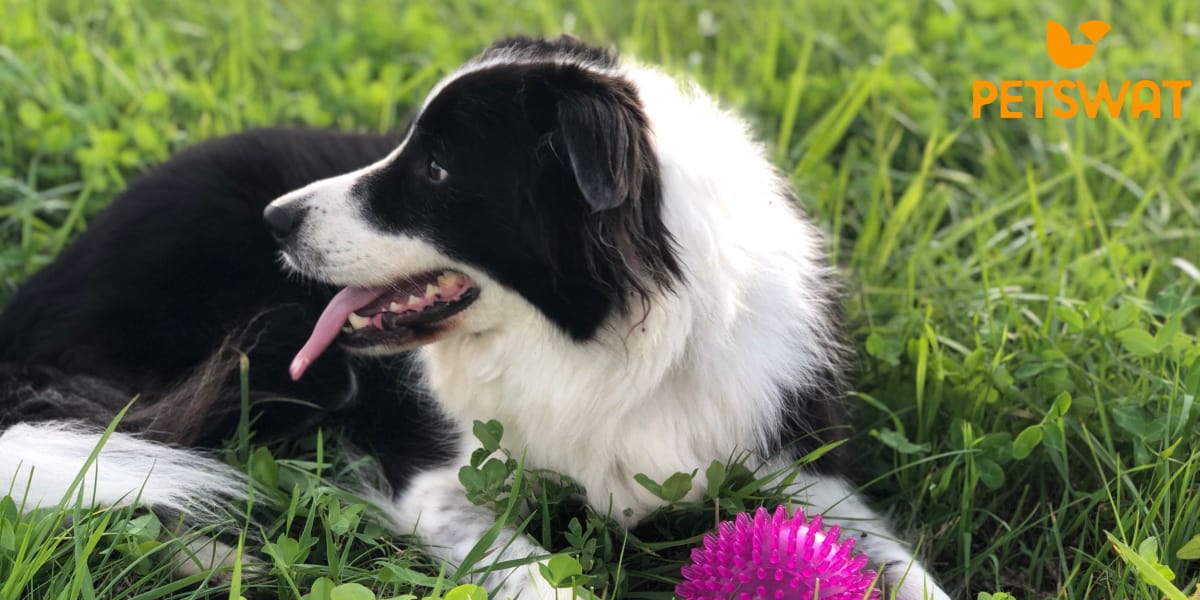Border Collies are a highly intelligent and energetic breed of dog that are known for their herding abilities. They are medium-sized dogs with a distinctive black and white coat, and they are often considered one of the most intelligent dog breeds. Border Collies are also known for their strong work ethic and their ability to learn and follow commands quickly. Today, let’s explore when do border collies go into heat!
Female Border Collies typically go into heat, or estrus, for the first time between the ages of 6 to 12 months, and then approximately every 6 to 8 months thereafter.
Understanding the reproductive cycle of Border Collies is essential for responsible breeding practices. Breeding should only be done with the goal of improving the breed and producing healthy puppies. It is important to have a thorough understanding of the reproductive cycle in order to ensure the health and well-being of both the female dog and her puppies.
The Anatomy of a Female Border Collie’s Reproductive System
The female reproductive system in Border Collies is similar to that of other dogs. It consists of the ovaries, uterus, cervix, and vagina. The ovaries are responsible for producing eggs, or ova, which are released during the estrus cycle. The uterus is where the fertilized eggs implant and develop into puppies. The cervix is the opening between the uterus and the vagina, and it plays a role in allowing sperm to enter the uterus during breeding.
In Border Collies, the ovaries are located near the kidneys, and they produce hormones that regulate the estrus cycle. The uterus is a muscular organ that expands during pregnancy to accommodate the growing puppies. The cervix is a small, narrow opening that dilates during labor to allow the puppies to pass through.
Understanding the Estrus Cycle in Border Collies
The estrus cycle, also known as the heat cycle, is the reproductive cycle in female dogs. It consists of four phases: proestrus, estrus, diestrus, and anestrus. Proestrus is the first phase of the cycle and is characterized by the swelling of the vulva and the presence of bloody discharge. This phase typically lasts for about 9 days.
Estrus is the second phase of the cycle and is when the female is fertile and receptive to mating. This phase is marked by a change in behavior, including increased friendliness and a willingness to mate. The female may also exhibit a “flagging” behavior, where she raises her tail to one side to signal her readiness to mate. Estrus usually lasts for about 9 days.
Diestrus is the third phase of the cycle and is when the female is no longer receptive to mating. This phase lasts for about 60-90 days and is followed by anestrus, which is a period of sexual inactivity that can last for several months.
Signs and Symptoms of a Border Collie in Heat
During the estrus cycle, Border Collies will exhibit both physical and behavioral changes. Physically, the female’s vulva will swell and become more prominent. There may also be a bloody discharge, which can vary in color and consistency. Some females may also experience changes in appetite or weight gain during this time.
Behaviorally, a Border Collie in heat may become more affectionate and seek attention from both humans and other dogs. She may also become more restless and anxious, pacing or whining more than usual. Additionally, she may exhibit a “flagging” behavior, where she raises her tail to one side when approached by a male dog.
It is important to note that not all females will exhibit these signs and symptoms, so it is important to be vigilant and observant during this time.
How to Determine the Best Time for Breeding
Determining the optimal time for breeding is crucial for successful reproduction. There are several methods that can be used to determine when a female Border Collie is most fertile. One method is to monitor the changes in the female’s vaginal discharge. When the discharge changes from bloody to a clear or straw-colored fluid, it is a sign that she is entering the fertile phase of her cycle.
Another method is to use a canine ovulation detector, which measures the levels of luteinizing hormone (LH) in the female’s urine. LH levels surge just before ovulation, indicating that the female is at her most fertile. This method can be more accurate than monitoring vaginal discharge alone.
It is also important to consider the male’s fertility when determining the best time for breeding. Sperm can survive in the female’s reproductive tract for several days, so it is important to time breeding to ensure that viable sperm are present when the eggs are released.
Factors Affecting the Reproductive Cycle in Border Collies
There are several factors that can affect the reproductive cycle in Border Collies. Environmental factors, such as temperature and daylight hours, can influence when a female comes into heat. Genetic factors can also play a role, as certain lines of Border Collies may have variations in their reproductive cycles.
Health issues can also impact a Border Collie’s reproductive cycle. Conditions such as hormonal imbalances or infections can disrupt the normal functioning of the reproductive system. It is important to ensure that both the male and female dogs are in good health before breeding.
Managing Border Collies During their Reproductive Cycle
Managing a Border Collie during her reproductive cycle requires careful attention and planning. It is important to keep the female dog separated from intact males during her heat cycle to prevent unwanted pregnancies. This may involve keeping her indoors or in a securely fenced area.
Proper care and nutrition are also important during this time. The female should be fed a high-quality diet that provides all of the necessary nutrients for her and her developing puppies. Regular exercise is also important, but it should be done in a controlled manner to prevent injury or stress.
Health Concerns and Risks during Pregnancy and Whelping
Pregnancy and whelping can come with their own set of health concerns and risks for Border Collies. It is important to monitor the female closely during pregnancy for any signs of complications, such as uterine infections or pregnancy toxemia. Regular veterinary check-ups are essential to ensure the health of both the mother and her puppies.
Whelping, or the process of giving birth, can also be a risky time for both the mother and her puppies. Complications such as dystocia, or difficult labor, can occur and may require veterinary intervention. It is important to have a plan in place for emergency situations and to be prepared to seek veterinary assistance if needed.
Caring for Newborn Border Collie Puppies
Caring for newborn Border Collie puppies requires careful attention and dedication. The puppies should be kept in a warm, clean environment and should have access to their mother’s milk for the first few weeks of life. It is important to monitor their weight gain and ensure that they are nursing properly.
Socialization is also important during this time. The puppies should be exposed to different sights, sounds, and experiences to help them develop into well-rounded adults. Early training can also begin during this time, with basic commands and housebreaking introduced gradually.
Conclusion: Responsible Breeding Practices for Border Collies
Responsible breeding practices are essential for the health and well-being of Border Collies. Breeding should only be done with the goal of improving the breed and producing healthy puppies. It is important to have a thorough understanding of the reproductive cycle and to carefully consider factors such as health, temperament, and conformation when selecting breeding pairs.
Finding a reputable breeder is important if you are looking to add a Border Collie to your family. A reputable breeder will have a thorough understanding of the breed and will prioritize the health and well-being of their dogs. They will also be able to provide you with information about the parents’ health clearances and any genetic testing that has been done.
If you are interested in becoming a breeder yourself, it is important to educate yourself about the breed and to seek guidance from experienced breeders. Breeding should only be done with a thorough understanding of the responsibilities involved and a commitment to the health and well-being of the breed.
Originally posted 2023-09-11 09:21:16.
Johny is a dedicated pet enthusiast, author, and the driving force behind the insightful content at PetSWAT. With a deep passion for animals and a wealth of knowledge acquired through years of experience, Johny brings a unique perspective to the world of pet care and companionship.



